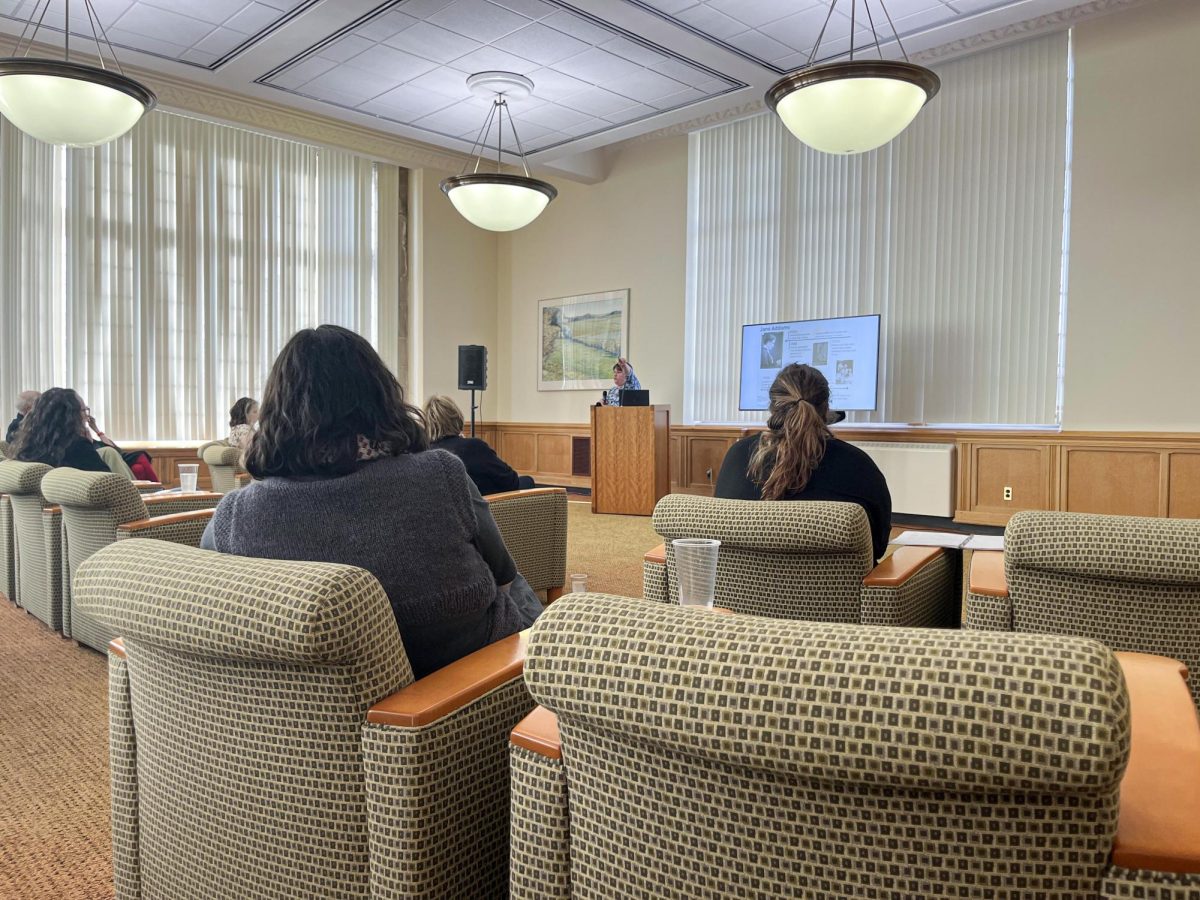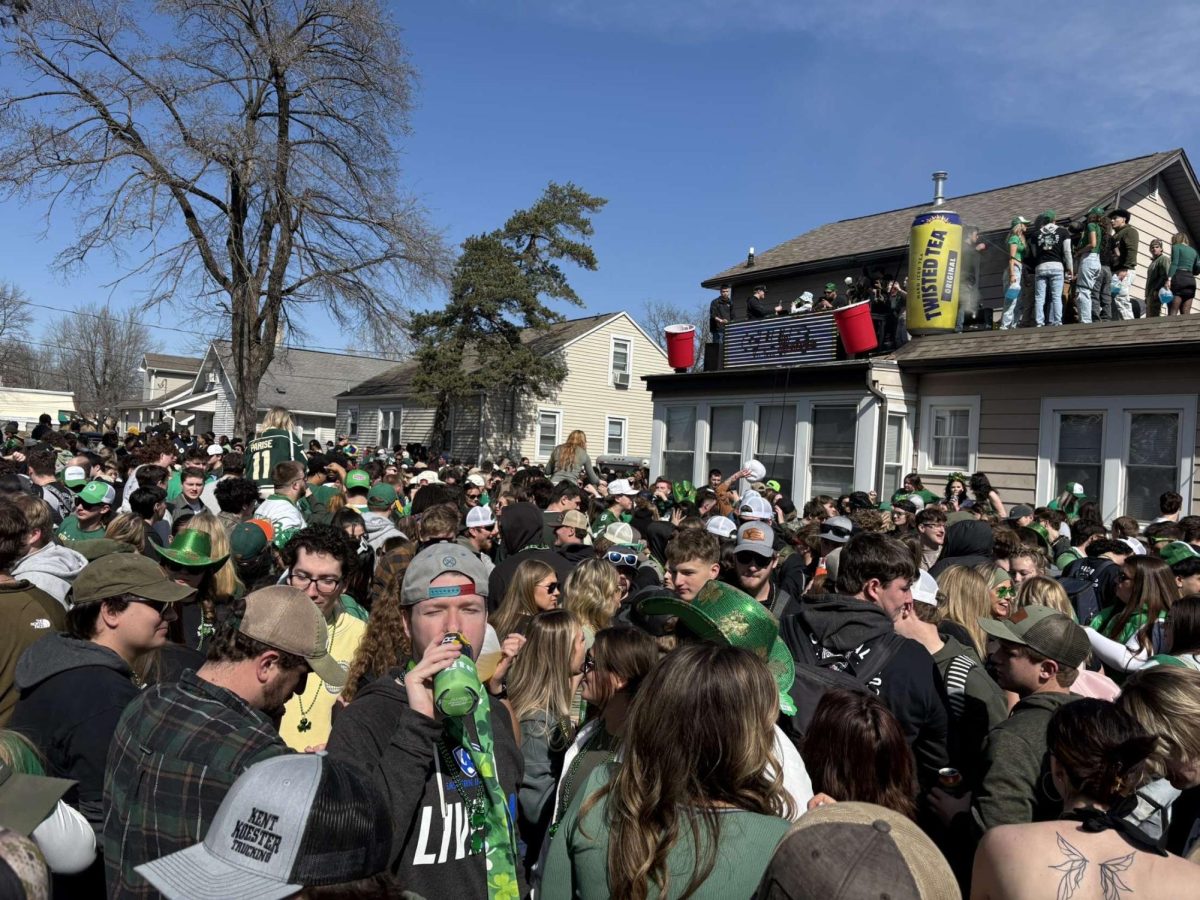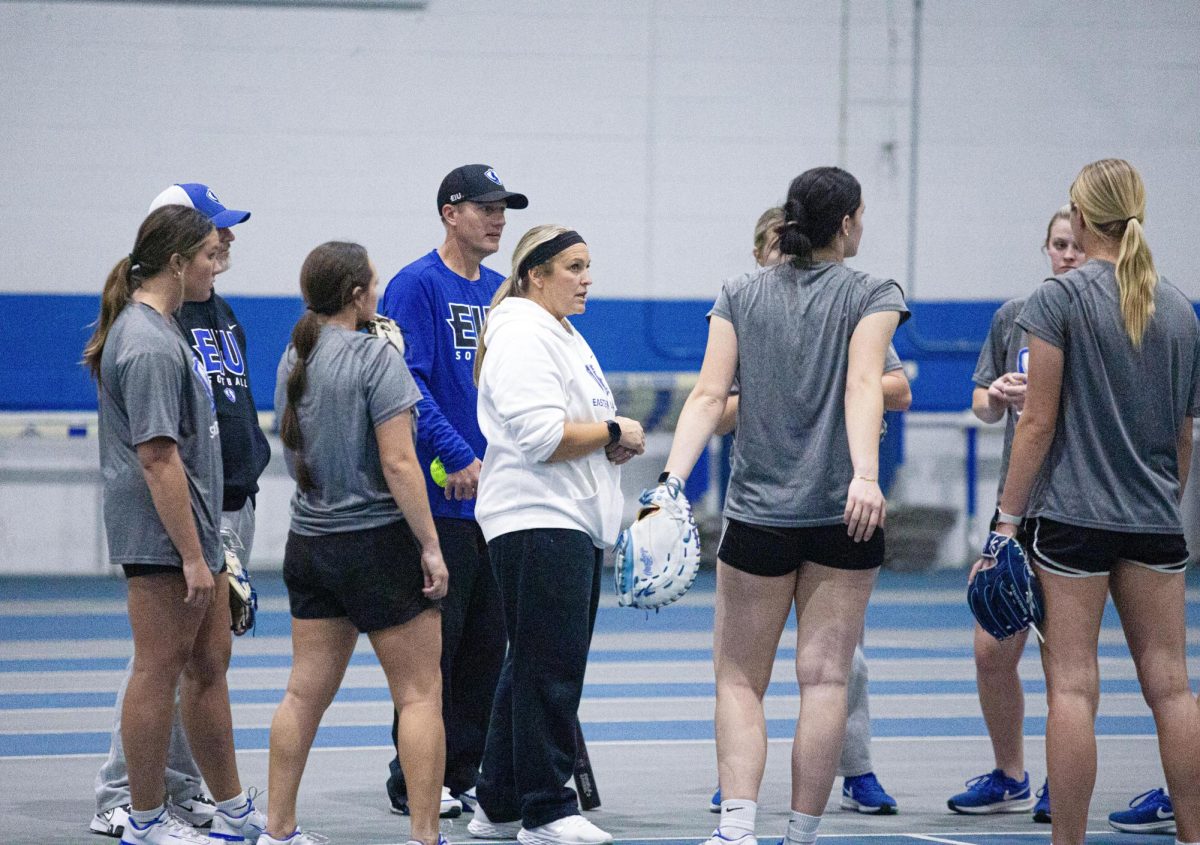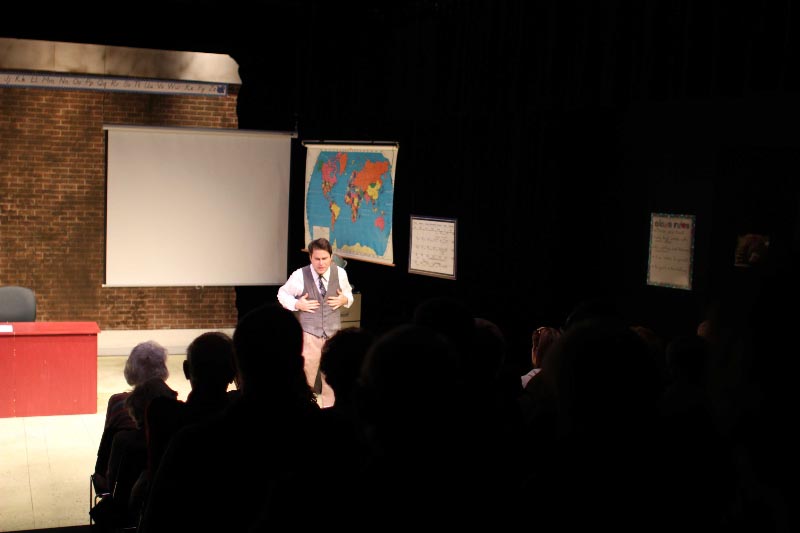‘Dawn of the Dead’ remake all style over substance
Remakes in cinema of any kind are sketchy at best, and remakes in the horror genre can be especially dicey. But what the 2004 version of “Dawn of the Dead” lacks in substance, it makes up for in abundant stylistic flourishes.
In Zack Snyder’s remake of George Romero’s 1979 horror classic, the first-time director uses artistic flare and unconventional visual techniques to overcome poor plot development, unsympathetic characters and trite conventions. Where Romero turned his miniscule budget into a classic through sardonic wit and bits of social commentary, Snyder merely masks his film’s shortcomings by throwing money at script difficulties.
Like Romero’s original, the film begins with the discovery of an unknown virus or infection that quickly spreads throughout Everett, Wisc., as the entire city is quickly turned to chaos with literal hordes of zombies wreaking havoc through stately suburbs.
The first character to witness the disorder is Ana (Sarah Polley), a nurse working third shift in a Milwaukee hospital. Ana barely escapes her picturesque neighborhood, as her zombified husband attacks her and she speeds out of the neighborhood in terror. After a crash on the highway Ana meets Kenneth (Ving Rhames) – a hardened and gruff police officer – along with nice guy Michael (Jake Weber), Andre (Mekhi Phifer) and his pregnant girlfriend Luda (Inna Korobkina).
The quintet makes its way to an enormous shopping mall across the highway hoping for safety. It is here Snyder’s story begins to get muddled.
Romero had a gift for making his motley gang of characters bond and eventually tear apart, but Snyder’s adaptation offers far too many characters who are ultimately either indispensable or too underdeveloped to illicit any audience empathy.
As a general rule, if you walk away not remembering a character’s name, he or she didn’t make the proper impression. Most of Snyder’s mall dwellers fall into this marginal category.
While it’s easy to become part of the pathos of Ana, her initial companions and even Andy – a gun store owner trapped on his roof across the street who wiles away his time playing chess and sniping zombies on the streets below – Snyder piles on characters seemingly as plot devices or mere zombie fodder. Even horror legend Tom Savini, who played a biker in Romero’s original and has the smallest of cameos in Snyder’s version as a county sheriff, is more likable and memorable than most of the mall-inhabiting characters given far too much (or far too little) screen time.
And while the group eventually hatches an escape plan after a series of zombie attacks and minor infighting, it quickly becomes apparent that few, if any, of the captives will make it out alive.
Romero’s initial “Dawn of the Dead,” although still a gruesome zombie picture, took glib and poignant shots at emerging consumer culture at the dawn of the Reagan era and made great use of parallels between zombies and the average comatose mall patron. Snyder, conversely, produces a highly stylized, skillfully shot piece ultimately lacking the soul and humor of the original. It’s sometimes beautiful, but ultimately vacant.
Snyder captures the grotesquely beautiful symmetry of Milwaukee suburbs and the eventual urban sprawl immersed in flames. He even offers contrast between the quaint and quiet mall and the immolation and destruction outside its doors.
The warm colors and subdued comfort of the mall stand in stark contrast with the gritty, grimy look of the emerging anarchy outside. While the mall set is often beautifully lit and its characters artfully shot, the growing outside world is filmed as grainy and chaotic with quick cuts and skewed camera angles.
Even the music, which reflects Snyder’s overabundant style as muzak, is often drifting throughout the background within the mall. This device is used most effectively, as Ana and company initially break into the mall as strains of Bobby Mcferin’s “Don’t Worry, Be Happy” waft through hallway speakers. Likewise, as masses of zombies begin gathering outside the shatterproof glass doors of the mall, a lounge rendition of Disturbed’s’ “The Sickness” plays with lyrics like “Get up, come on get down with the sickness … Madness is the gift that has been given to me,” taking on both comical and literal meaning.
Even the violence and gore – and there is plenty – is brimming with directorial flare. While Snyder can’t compare with the bullet ballets of John Woo just yet, there’s something oddly surreal in immense amounts of splattering blood, gore and explosive immolation of this revitalized version of “Dawn of the Dead.”
This depth of style, however, is not enough to make Snyder’s work truly compelling.
The film offers little more than zombie films from previous decades and can’t even compare in scope with Danny Boyle’s lo-fi and thought-provoking “28 Days Later.”
Snyder surely has a career ahead of him. But as zombie movies go, this remake is all gnawed limbs and mayhem, but no real brain to speak of.






![[Thumbnail Edition] Senior tennis player Luisa Renovales Salazar hits the tennis ball with her racket at the Darling Courts at the Eastern Illinois University campus in Charleston, ILL.](https://www.dailyeasternnews.com/wp-content/uploads/2025/03/Tennis_01_O-1-e1741807434552-1200x670.jpg)





![[Thumbnail Edition] Eastern Illinois University baseball's hitting coach and recruiting coordinator Mike Pugliese urges players on the team to increase their effort after a slow start to its pregame routine at the team's first intrasquad scrimmage of the season at O'Brien Field on Jan. 31, 2025.](https://www.dailyeasternnews.com/wp-content/uploads/2025/03/BB_02_O-1-e1741909628540-1200x702.jpg)
![[Thumbnail Edition] Senior right-handed pitcher Tyler Conklin pitching in the Eastern Illinois University baseball team's intrasquad scrimmage at O'Brien Field in Charleston, Illinois on Jan. 31.](https://www.dailyeasternnews.com/wp-content/uploads/2025/03/TC_01_O-e1741567955534-1200x669.jpg)




![[Thumbnail Edition] Senior, forward Macy McGlone finds an open teammate to pass the ball too during the game against the Tennessee State Tigers 69-49, in Groniger Arena on the Eastern Illinois University campus, Charleston Ill.](https://www.dailyeasternnews.com/wp-content/uploads/2025/03/WBB_02_O-1-e1741228987440-1200x692.jpg)


















![E[Thumbnail Edition] Eastern Illinois softball freshman utility player Abbi Hatton deciding to throw the softball to home plate in a fielding drill during softball practice at the field house in Groniger arena on Tuesday Feb. 11.](https://www.dailyeasternnews.com/wp-content/uploads/2025/03/SB_03_O-e1741208880750-1-e1741209739187-1200x815.jpg)













![The Weeklings lead guitarist John Merjave [Left] and guitarist Bob Burger [Right] perform "I Am the Walrus" at The Weeklings Beatles Bash concert in the Dvorak Concert Hall on Saturday.](https://www.dailyeasternnews.com/wp-content/uploads/2025/03/WL_01_O-1200x900.jpg)
![The team listens as its captain Patience Cox [Number 25] lectures to them about what's appropriate to talk about through practice during "The Wolves" on Thursday, March 6, in the Black Box Theatre in the Doudna Fine Arts Center in Charleston, Ill.](https://www.dailyeasternnews.com/wp-content/uploads/2025/03/WolvesPre-12-1200x800.jpg)
















